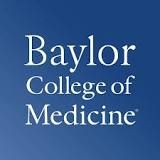Request Demo
Last update 08 May 2025

Instituto do Cancer do Estado de Sao Paulo
Last update 08 May 2025
Overview
Tags
Neoplasms
Small molecule drug
Disease domain score
A glimpse into the focused therapeutic areas
No Data
Technology Platform
Most used technologies in drug development
No Data
Targets
Most frequently developed targets
No Data
| Disease Domain | Count |
|---|---|
| Neoplasms | 1 |
| Top 5 Drug Type | Count |
|---|---|
| Small molecule drug | 1 |
Related
1
Drugs associated with Instituto do Cancer do Estado de Sao PauloTarget- |
Mechanism- |
Active Org. |
Originator Org. |
Active Indication |
Inactive Indication- |
Drug Highest PhasePhase 2 |
First Approval Ctry. / Loc.- |
First Approval Date- |
102
Clinical Trials associated with Instituto do Cancer do Estado de Sao PauloNCT06887621
Patients at High Risk for Postoperative Nausea and Vomiting Undergoing Gynecological Surgery: Efficacy of Oral Amisulpride in Combination With Intravenous Ondansetron and Dexamethasone - a Parallel-group Randomized Trial
Amisulpride is a potent antagonist of dopamine D2 and D3 receptors, both implicated in the emetic response when activated. It is currently used intravenously for the prevention of chemotherapy-induced and postoperative nausea and vomiting (PONV), but this route has a short half-life time of 4 to 5 hours, could be expensive, causes infusion-related pain, and is not available in Brazil. Some of these limitations could be overcome by the preemptive use of an oral formulation. At present, there are no data regarding the use of oral amisulpride for PONV, which is an affordable and painless option with half-life time of 12 hours. We propose a quadruple-blind clinical trial involving patients undergoing gynecological surgery aged 18 years and older, and assessed as being at high risk for PONV according to the Apfel Score (score 3 or 4). The primary outcome of this study is to evaluate complete response to PONV up to 24h, comparing the efficacy of adding 50 mg oral amisulpride as a third antiemetic agent to the standard institutional protocol at the Hospital da Mulher of São Paulo (IV dexamethasone 10 mg + IV ondansetron 4 mg) for laparoscopic surgeries. Secondary outcomes will evaluate (1) nausea, (2) vomiting, (3) nausea and vomiting, (4) use of rescue treatment, (5) overall adverse events, and (6) adverse events.
Start Date10 Apr 2025 |
Sponsor / Collaborator |
NCT06435286
Effectiveness and Performance of a Mobile, Automated, Optical Biopsy Technology for Esophageal Cancer Screening: A Clinical Study in Brazil and the United States
In a previous clinical trial in China and the United States (US), the investigators developed and validated a mobile, high-resolution microendoscope (mHRME) for screening and surveillance of esophageal squamous cell neoplasia (ESCN). The trial revealed higher specificity for qualitative (visual) interpretation by experts but not the novice and in the surveillance arm (100% vs. 19%, p <0.05). In the screening arm, diagnostic yield (neoplastic biopsies/total biopsies) increased 3.6 times (8 to 29%); 16% of patients were correctly spared any biopsy, and 18% had a change in clinical plan. In a pilot study in Brazil, the investigators tested a software-assisted mHRME with deep-learning software algorithms to aid in the detection of neoplastic images and determine the performance, efficiency, and impact of the AI-mHRME when to Lugol's chromoendoscopy (LCE) alone and when using AI-mHRME with LCE. In this clinical trial, the investigators will build on the Brazil pilot trial data to optimize an artificial intelligence (AI) mHRME and evaluate its clinical impact and implementation potential in ethnically and socioeconomically diverse populations in the US and Brazil.
Start Date01 Mar 2025 |
Sponsor / Collaborator |
NCT06640283
Dynamic Assessment of ctDNA in Patients With Cervical and Anal Canal Tumors to Optimize Follow-up and Clinical Outcomes in the Brazilian Unified Health System (SUS)
After definitive radiotherapy (RT) treatment (with or without chemotherapy), cervical and anal canal neoplasms frequently exhibit disease persistence or recurrence. Due to the local inflammatory process post-treatment, response assessment by imaging (current gold standard) is limited, often necessitating multiple follow-ups and repeated invasive biopsies. Conventional follow-up is complex and costly, requiring equipment from secondary and tertiary services, trained radiologists, and patient exposure to radiation and contrast.
In this context of human papillomavirus(HPV)-related neoplasms, recent studies have demonstrated the role of ctDNA (circulating tumor DNA) in assessing the risk of recurrence or disease progression, providing a rationale for using the tool in two fronts:
* Optimizing follow-up based on serial monitoring of ctDNA;
* Selecting patients with positive ctDNA after RT, who are at high risk of recurrence, for treatment intensification.
Monitoring with ctDNA as a standalone follow-up tool in cases evolving with negative ctDNA after RT has the potential to replace imaging exams, being a minimally invasive test performed on a peripheral blood sample. Currently, ctDNA testing has expensive methodologies not available in the Unified Health System (SUS). This project aims to develop a methodology for ctDNA evaluation focused on HPV ctDNA research that is low-cost and executable in SUS, as well to assess the accuracy of this test in the population with HPV-related tumors.
Additionally, we will evaluate whether the early introduction of immunotherapy in patients with positive ctDNA after definitive treatment can increase cure rates. Immunotherapy already has a well-defined role in the treatment of metastatic HPV-related neoplasms. Recently, the use of anti-programmed death-1 (anti-PD1) has also shown benefits in patients with locally advanced cervical cancer with a high risk of recurrence who are candidates for chemoradiotherapy (CRT). Therefore, its use focused on HPV-related tumors, as well as a better understanding of which patients benefit from this strategy, warrants further investigation.
In this context of human papillomavirus(HPV)-related neoplasms, recent studies have demonstrated the role of ctDNA (circulating tumor DNA) in assessing the risk of recurrence or disease progression, providing a rationale for using the tool in two fronts:
* Optimizing follow-up based on serial monitoring of ctDNA;
* Selecting patients with positive ctDNA after RT, who are at high risk of recurrence, for treatment intensification.
Monitoring with ctDNA as a standalone follow-up tool in cases evolving with negative ctDNA after RT has the potential to replace imaging exams, being a minimally invasive test performed on a peripheral blood sample. Currently, ctDNA testing has expensive methodologies not available in the Unified Health System (SUS). This project aims to develop a methodology for ctDNA evaluation focused on HPV ctDNA research that is low-cost and executable in SUS, as well to assess the accuracy of this test in the population with HPV-related tumors.
Additionally, we will evaluate whether the early introduction of immunotherapy in patients with positive ctDNA after definitive treatment can increase cure rates. Immunotherapy already has a well-defined role in the treatment of metastatic HPV-related neoplasms. Recently, the use of anti-programmed death-1 (anti-PD1) has also shown benefits in patients with locally advanced cervical cancer with a high risk of recurrence who are candidates for chemoradiotherapy (CRT). Therefore, its use focused on HPV-related tumors, as well as a better understanding of which patients benefit from this strategy, warrants further investigation.
Start Date01 Nov 2024 |
Sponsor / Collaborator |
100 Clinical Results associated with Instituto do Cancer do Estado de Sao Paulo
Login to view more data
0 Patents (Medical) associated with Instituto do Cancer do Estado de Sao Paulo
Login to view more data
967
Literatures (Medical) associated with Instituto do Cancer do Estado de Sao Paulo01 Dec 2025·Child's Nervous System
Impact of stereotactic radiotherapy for craniopharyngioma: a large, academic hospital cohort
Article
Author: Da Róz, Leila Maria ; Carlotti, Carlos Gilberto ; Mauro, Geovanne Pedro ; Weltman, Eduardo ; Matushita, Hamilton ; Gico, Vinicius de Carvalho ; de Souza, Evandro César ; Villar, Rosangela Correa
01 May 2025·Liver International
Hepatic Recompensation Before Systemic Therapy for Hepatocellular Carcinoma Yields Comparable Survival to Compensated Cirrhosis
Article
Author: Bejarano, Diana ; Mendizabal, Manuel ; Rodriguez, Jorge ; Marciano, Sebastián ; Simian, Daniela ; Tamagnone, Norberto ; Bermudez, Carla ; Orozco, Federico ; Ridruejo, Ezequiel ; Anders, Margarita ; Beltrán, Oscar ; da Fonseca, Leonardo Gomes ; Varón, Adriana ; Reggiardo, Virginia ; Silva, Marcelo ; Palazzo, Ana ; Arufe, Diego ; Poniachik, Jaime ; Marín, Juan Ignacio ; Cheinquer, Hugo ; Piñero, Federico ; Pages, Josefina
25 Apr 2025·Cancer Research
Abstract CT250: Trofuse-023: A phase 3, randomized, open-label study of pembrolizumab with or without maintenance sacituzumab tirumotecan (sac-TMT) as first-line treatment for metastatic squamous non-small-cell lung cancer (NSCLC)
Author: Zimmer, Zachary ; Chih-Hsin Yang, James ; Zhou, Caicun ; Garassino, Marina Chiara ; Zhao, Bin ; Kowalski, Dariusz ; de Castro, Gilberto ; Kurata, Takayasu ; Bhagwati, Niyati ; Frost, Nikolaj ; Zenke, Yoshitaka ; Casarini, Ignacio ; Peled, Nir ; Rodríguez-Abreu, Delvys ; Lee, Sung Yong
100 Deals associated with Instituto do Cancer do Estado de Sao Paulo
Login to view more data
100 Translational Medicine associated with Instituto do Cancer do Estado de Sao Paulo
Login to view more data
Corporation Tree
Boost your research with our corporation tree data.
login
or

Pipeline
Pipeline Snapshot as of 25 Dec 2025
The statistics for drugs in the Pipeline is the current organization and its subsidiaries are counted as organizations,Early Phase 1 is incorporated into Phase 1, Phase 1/2 is incorporated into phase 2, and phase 2/3 is incorporated into phase 3
Phase 2 Clinical
1
Login to view more data
Current Projects
| Drug(Targets) | Indications | Global Highest Phase |
|---|---|---|
Phosphorylethanolamine | Neoplasms More | Phase 2 |
Login to view more data
Deal
Boost your decision using our deal data.
login
or

Translational Medicine
Boost your research with our translational medicine data.
login
or

Profit
Explore the financial positions of over 360K organizations with Synapse.
login
or

Grant & Funding(NIH)
Access more than 2 million grant and funding information to elevate your research journey.
login
or

Investment
Gain insights on the latest company investments from start-ups to established corporations.
login
or

Financing
Unearth financing trends to validate and advance investment opportunities.
login
or

AI Agents Built for Biopharma Breakthroughs
Accelerate discovery. Empower decisions. Transform outcomes.
Get started for free today!
Accelerate Strategic R&D decision making with Synapse, PatSnap’s AI-powered Connected Innovation Intelligence Platform Built for Life Sciences Professionals.
Start your data trial now!
Synapse data is also accessible to external entities via APIs or data packages. Empower better decisions with the latest in pharmaceutical intelligence.
Bio
Bio Sequences Search & Analysis
Sign up for free
Chemical
Chemical Structures Search & Analysis
Sign up for free
